COVER STORY:CONCEPTBuilding a Society where Digital Technology Brings People TogetherFuture of Data-driven Life Solutions
Highlight
The use of data to create new value is happening in many corners of society amid accelerating efforts to bring about Society 5.0. In particular, there are high hopes for the development of life solutions that enable people to live and work in ways never before seen through the advance of digitalization and greater use of data in everyday life. What sort of services will be offered to consumers in an environment where different forms of data are put to diverse uses? How should data be used if it is to provide people everywhere with a richer way of life? Hitachi Review invited Chizuru Suga, Head of the World Economic Forum Centre for the Fourth Industrial Revolution Japan, to join Hitachi researchers in exploring the future of life solutions.
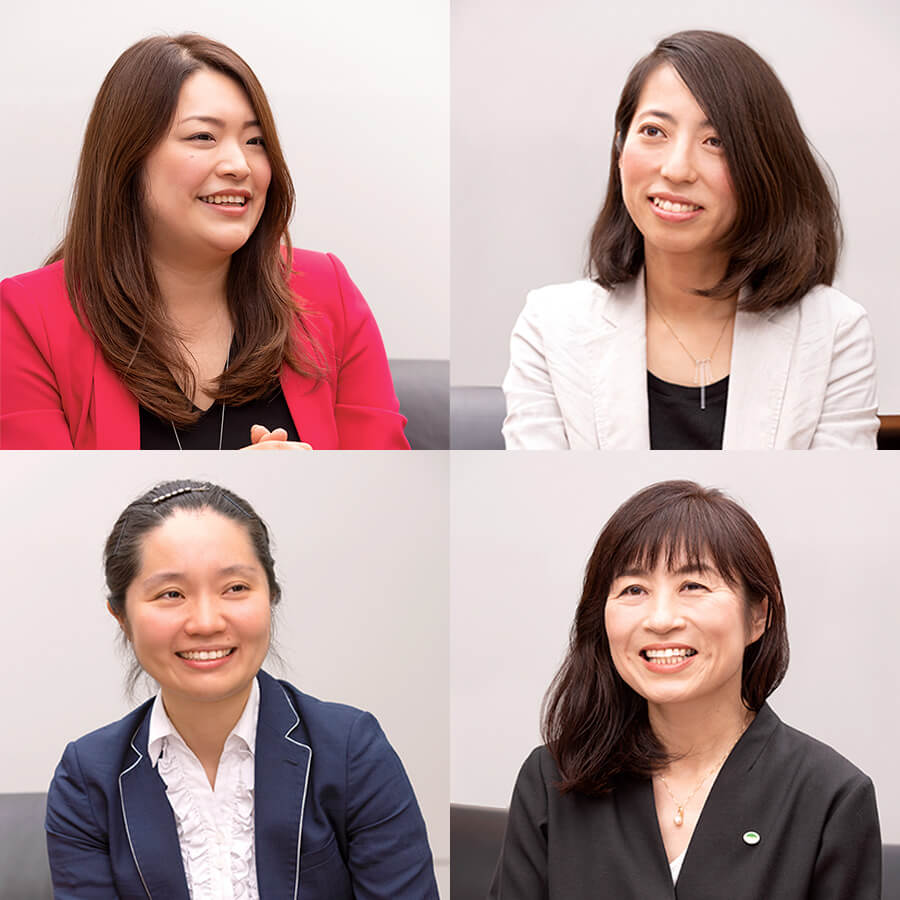
Inclusive Approach to Urban Development
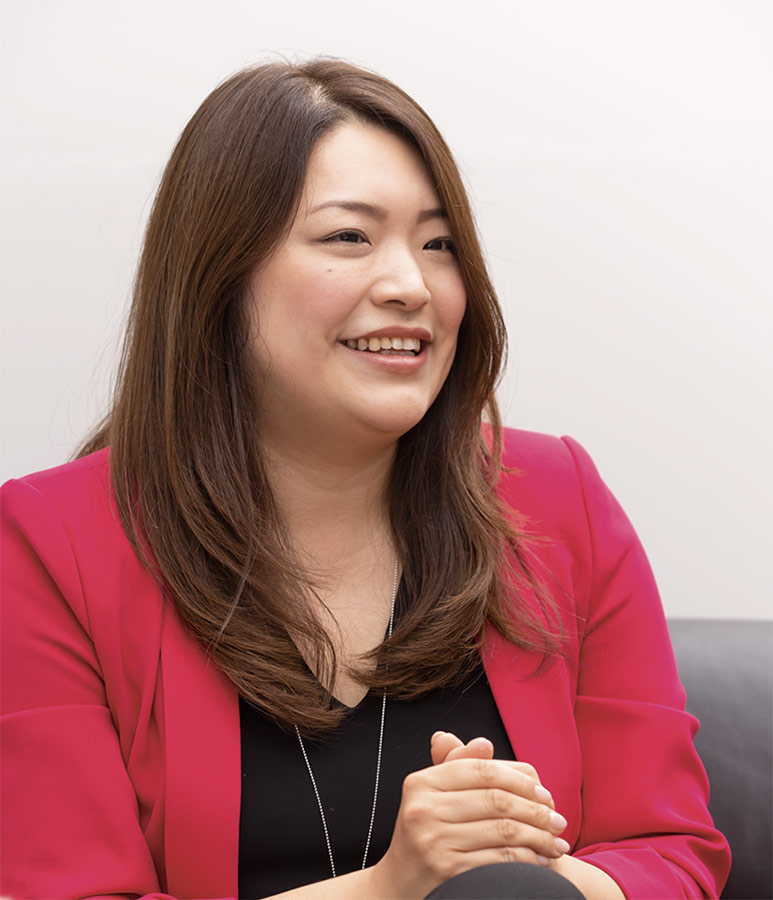
Chizuru Suga
Head of World Economic Forum Centre for the Fourth Industrial Revolution Japan (C4IR Japan)
Joined the Ministry of Economy, Trade and Industry in 2003. Worked at the Agency for Natural Resources and Energy, primarily in policy-making on climate change and energy diplomacy. She subsequently studied at Wharton School, University of Pennsylvania where she gained an MBA. On returning to Japan, she worked on the Cool Japan Initiative, corporate governance, and the Vice-Minister and Young-Generation Project. She joined C4IR Japan as its inaugural head in July 2018.
KuwabaraHitachi envisions the human-centric society as one that is inclusive of everyone and is making an effort to provide solutions not only in industry, but also in areas more closely aligned with daily life. The 2021 Mid-term Management Plan formulated in April 2019 laid out a strategy of simultaneously delivering three different values through Hitachi’s Social Innovation Business, namely social, environmental, and economic values, reorganizing the business into five sectors, one of which is Smart Life solutions. In fields such as smart cities, healthcare, connected cars, and connected appliances, the aim is to improve quality of life (QoL) and to help create a human-centric society that is a comfortable place to live for everyone.
Suga-san, you have extensive experience with policy making at the Ministry of Economy, Trade and Industry (METI) and, in your current role as head of the World Economic Forum Centre for the Fourth Industrial Revolution Japan (WEF C4IR Japan), are involved in formulating data policies that will be essential to digital society. Given that the idea of building societies that are human-centric and comfortable places to live is part of a worldwide trend, how do you personally view these moves?
SugaTo give a familiar example, when I had a house built recently, I was particularly concerned about the kitchen. Wanting to choose fittings that I would find easy to use, I visited a large showroom. Although I happily embarked on this purchasing mission thinking that I could get advice from experts on what was new, what I found was that the sales assistants entirely failed to get in tune with how the person using the kitchen would look at things, such as how to go about cooking two or three things at once, instead going on about features such as the heating performance of the induction cookers or the drawer closing mechanism. Despite living in an era that has transcended mass production and seeks to customize products to individual preferences, don’t you find many things to be based solely on the thinking of the people who make or sell them, people who have no sense of what daily life actually entails? This is also true of things like cosmetics where it seems everything is for the benefit of those who sell them, who keep on adding new skin care steps, whether it be lotions, emulsions, essences, or creams.
Likewise for smart cities, a key aspect of Society 5.0 and a field in which Hitachi is engaged, where the idea of being attentive to people’s concerns is one that needs to permeate all corners of urban life.
At C4IR Japan, we have been discussing what smart cities should do to be more inclusive of people suffering from dementia, the numbers of whom are anticipated to increase. As the collection and use of data from sensors installed city-wide provides the basis for services in a smart city, the presence of these sensors will also make it easier to detect abnormal behavior associated with dementia.
It may be that talk of behavior detection raises concerns of creating a stifling environment in which people’s every action is monitored. However, if we are to help people with dementia, it is important that services are designed based on a philosophy not of monitoring their actions in order to exclude them from society, but rather of asking what support we can provide when abnormal or aberrant behavior is identified that will allow them to go on living in the same way they have in the past.
If a person with dementia purchases 5 L of milk from the supermarket every day, for example, reminding them that they made the same purchase yesterday will likely hurt their dignity. I understand, however, that there are some supermarkets where it is written into the employee manual to instead deal with such situations by suggesting to them that milk will be on special tomorrow or noting that the milk is heavy and offering to deliver it. This is an inclusive and human-centric approach, and having all services, products, and infrastructure designed on this basis would likely make the city a comfortable place for everyone to live, not just those with dementia. This is why I believe that discussion of smart cities clearly has to incorporate the viewpoints of residents and consider what is best for them.
Communities as a Starting Point for Building a Future
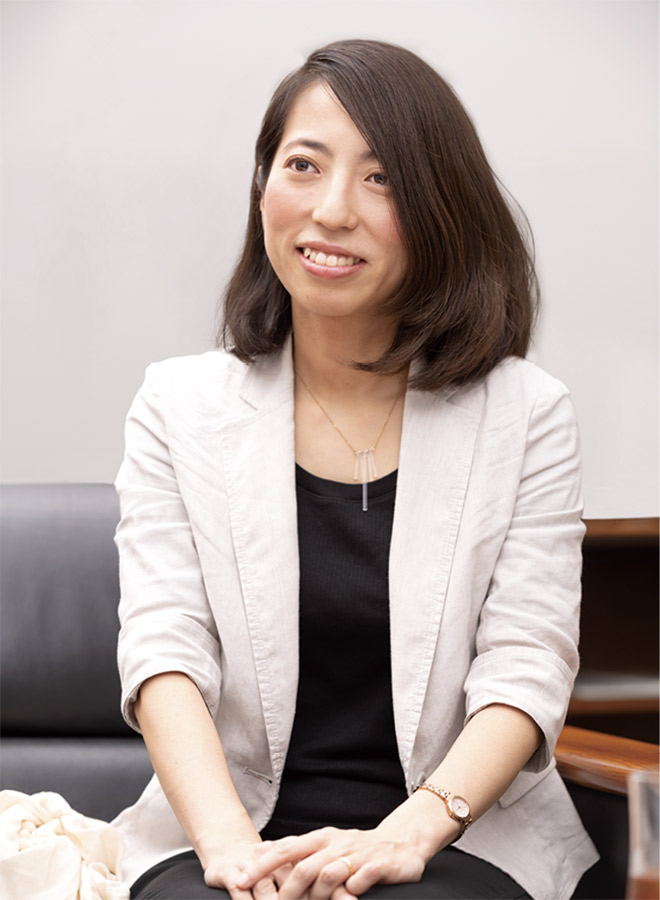
Maiko Kaneda
Designer, Vision Design Project, Global Center for Social Innovation – Tokyo, Research & Development Group, Hitachi, Ltd.
KuwabaraThe past approach to smart cities has mainly involved questions about how to encourage behavioral change and how consumers and businesses will make use of smarter infrastructure for things like energy and transportation. Attempting to design the mechanisms and functions of society in a way that puts people first is what the current debate about smart cities is all about, and it is what Society 5.0 aims to create. This makes it important, I believe, to think about a form of society that focuses attention on the communities in which people’s lives actually take place.
Kaneda-san, can you please tell us about the work you are doing that takes a vision design approach to addressing the viewpoints of residents?
KanedaWhile Hitachi has long been working on ways of anticipating how people’s values might change in the future, the Vision Design Project in which I am involved is considering how to use technology to engage with people more closely, articulating the pressing challenges for consumers that cannot be overcome by advanced technology alone and the potential for new challenges for people brought about by advanced technology.
One such activity is our Future Living Lab where we are setting out to create small futures based on the communities where we actually live as a starting point to explore participatory social systems. We are starting out by seeking to build trust through dialogue based on the assumption that changes to countries or regions lead to changes in the people who live there, and with this comes an ability to get in step. In practice, our first action has been to learn about how people really live, visiting farmers on the Miura Peninsula of Kanagawa Prefecture and working alongside them as they harvested vegetables and established a farmers’ market for the direct sale of produce. One of our aims for the future is to utilize the farmers’ market, which has the potential to serve as a point of contact with the community, as a way of inducing attitudinal and behavioral changes in the people who use it, treating it as a unique means of exposing the issues facing the community.
While the ultimate focus of this work is on smart cities in their guise as large social systems, our immediate objective is to investigate the nature of future distributed social systems through this community-based participatory project of collaborative creation.
SugaC4IR Japan is also working on projects that focus on distinctively Japanese communities. In mobility, for example, talk of using the technologies of the Fourth Industrial Revolution to overcome societal challenges has been dominated by the issue of urban traffic congestion. In Japan, in contrast, where most regions are anticipating shrinking populations, it is the strategic downsizing of transportation infrastructure that is a more pressing question. Through careful rationalization of railways and bus routes that face financial pressure from falling passenger numbers or by replacing them with more flexible forms of mobility such as on-demand buses, scope remains for making regional communities convenient places to live again, before they reach the point of no return. Whereas the removal of railway services to a community has been a death sentence in the past, instead of discontinuing services altogether, it is possible, given access to the technologies of the Fourth Industrial Revolution, to adopt forward-looking alternatives and survival strategies.
KanedaWe, too, have started seriously exploring what form infrastructure should take that is driven by residents’ needs.
SugaSuccessful communities are likely to be those that have a depth of social capital, meaning the ability of people to help one another. Places that lack this capacity, on the other hand, may have a need for designers like Kaneda-san who can act as an interpreter between the different sides.
TeramotoMaking community infrastructure more compact also creates tighter links between people. In the urban areas of Japan, even though the density of people is high, human connections are weak. What can be done to help single and elderly people prone to isolation or families with children maintain links with the people around them? One approach is to make use of technologies like those for mobility and telecommunications to eliminate relocation and physical separation.
If people live in smart mobile homes for example, they will be able to stay wherever they want relying on their own generator and water purifier for essential services and working remotely by means of telepresence or robotics. With autonomous driving, they could also relocate as they sleep, moving close to the family home if they need help with childcare or getting advice remotely. This would be a world in which communities of the elderly or of people raising children who congregate to provide mutual support could form dynamically in different places. While this obviously raises legal and other challenges, in terms of technology it should provide a way to overcome physical separation whether it be by real or virtual means. I believe that the ability to live without being bound by location and environment will be an important facet of the human-centric society and I will work to develop technology to support such a society.
What Forms of Data Use and Data Policy Generate Value for People and Society?
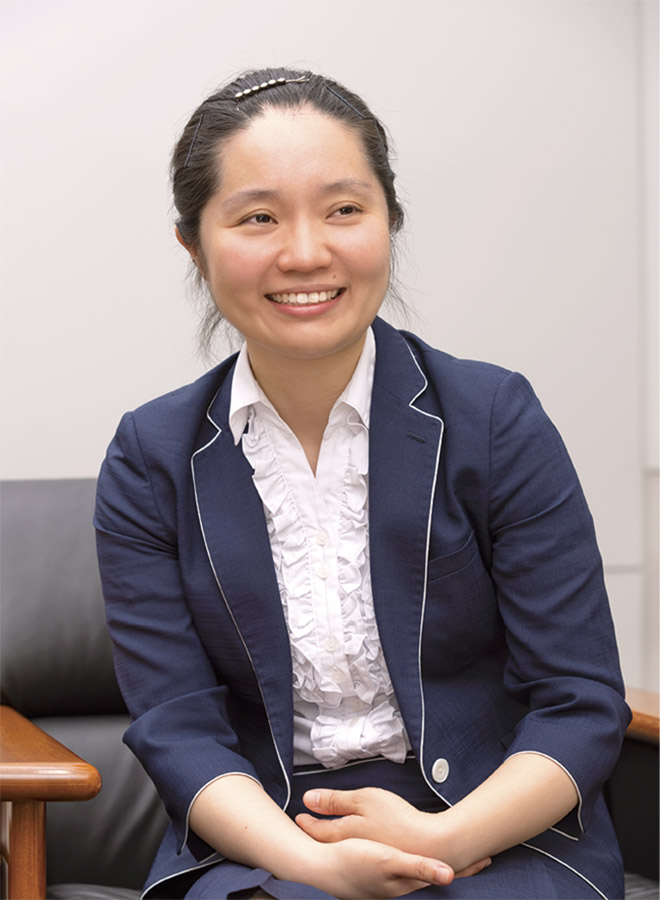
Yaemi Teramoto
Senior Researcher, Intelligent Information Research Department, Center for Digital Technology Innovation – Digital Technology, Research & Development Group, Hitachi, Ltd.
KuwabaraWe orient our community-based participatory activities toward exploring what is meant by a rich and human-centric way of life, and work with residents to develop new services and social infrastructure that are attuned to how people live. The challenge when it comes to achieving this, I believe, is to work organically and productively on developing communication processes that include dialogue and consensus building as well as ways of encouraging attitudinal and behavioral changes, and also on the technologies and applications of data that support this. In terms of a policy-based approach, what will be needed to create smart cities and deliver on the aims of Society 5.0?
SugaAs the success of Society 5.0 depends on whether society as a whole can put data to good use, an urgent task is to build a global consensus on what we should do with regard to data, including what things we should refuse to allow.
Given that the companies driving data and artificial intelligence (AI) are expected to continue expanding at an accelerating rate, how can we maintain a robust competitive environment and individual well-being without blocking innovation? We need to summon up what power remains with government and put rules in place now before things get out of control. Paradoxically, and something where we cannot rely on government, this also demands that we pull off the feat of consolidating the knowledge of those companies that handle this data in practice and of the academics who follow the totality of the major discussions going on around this topic, and put our heads together with the rest of the world to address the issues in real time.
C4IR Japan has helped to make this data governance a top priority item on the policy agenda both in Japan and around the world.
For example, how to handle urban data governance comes up as a topic for debate when building smart cities, but most of the data collected in cities in the future will likely be held publicly. Who collects this information, how they go about it, and to what extent can we allow its sharing without infringing on privacy? We are striving to provide the most effective forum for debating these topics that are being grappled with by countries and cities everywhere, thereby expediting discussion of rule design.
TeramotoIf good use can be made of different forms of data in accordance with rules, it should be possible to clarify what is going on in the real world through statistical approaches or approaches that involve determining the actual models that underly the data. The value of these techniques of data analytics, I believe, lies not only in the use of automation to help work go more smoothly, but also in helping people to make better decisions and choose better courses of action.
Recent times have seen people learning from AI decisions, analyzing the criteria that AI use for decision-making, and looking into whether AI decisions suffer from biases that are ethically unacceptable. If a better appreciation of what is really going on can be acquired through the use of analytics that combine large amounts of data with AI, something that is difficult for people, providing this information back to us as feedback should lead to the sort of behavioral changes we discussed earlier.
KanedaIn the work being done at the Future Living Lab at Miura, we are thinking about what might happen if the farmers we are working with start making use of data. The first measure we are considering involves using data at the unstaffed farmers’ market to emphasize how farmers put their heart and soul into growing their produce such that recognition of this will be reflected in the prices of the vegetables. We think this will lead to the following outcomes.
Firstly, after seeing the care with which farmers produce their vegetables as a resource for Miura, the act of purchasing vegetables will conjure up all sorts of different feelings in customers. It might even change how people feel about buying vegetables from a supermarket. Furthermore, providing the farmers with the ability to make use of the data from the farmers’ market might even lead to a transformation in their own attitudes compared to the current situation where all they know when putting their produce on sale at the market is whether or not it actually sells.
Local residents have also started to think about whether there is anything else that, like this “heart and soul,” has been largely invisible in the past but might be a source of value if brought to light. What happens when changes like this take place, I envision, is that it gets the local people thinking about what a world that makes use of data might actually mean.
TeramotoThe bottleneck when using data is sharing. You see companies taking the view that data is part of their core competence, with few incentives for them to share that data with others. While I believe that national and local government taking the lead in making data open is the right approach, I don’t imagine that getting companies to share data with each other will be quite so easy.
SugaI believe that this is only a question of time. What I suspect is that many companies have an overinflated idea of how much the data they hold is worth. Data, however, is like stock in that its true value only becomes apparent when it goes public. It may seem like it is incredibly valuable when held within the company, only to prove otherwise when it is opened up. Alternatively, people may emerge who find it unexpectedly valuable. At some point, the corporate world will wake up to the fact that data does not generate any value when closely held. In anticipation of that time, I am getting started now on the infrastructure for data exchange.
One development the METI is watching closely is India Stack, a suite of digital infrastructure being established by the Indian government. The government is issuing all citizens with a digital identifier (ID) and providing the capability for people to use this infrastructure to perform administrative procedures or make payments using electronic signatures. If Japan could put similar digital infrastructure in place to enable secure interoperation between different people, data, and systems, it would, I believe, provide a basis for the cyber-physical systems (CPSs) that underpin a smart city.
Building a Human-centric Society with Trust as a Key Focus
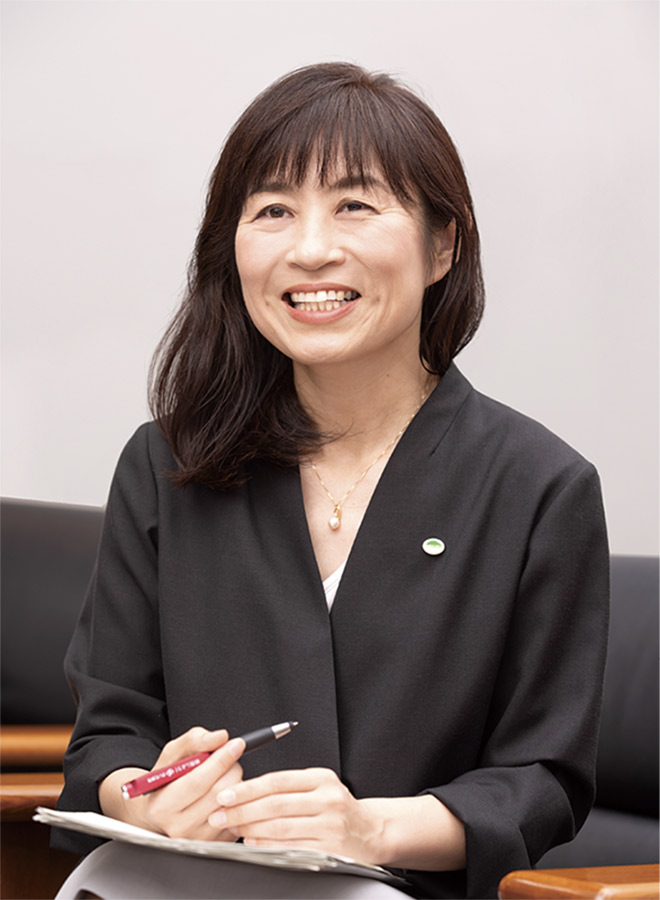
Akiko Kuwabara
Moderator
Senior Technical Staff, Technology Strategy Office, Research & Development Group, Hitachi, Ltd.
KuwabaraAs Teramoto-san pointed out, at the same time as real-world links between people are weakening, it feels to me that we are also entering a time in which digitalization is prompting a re-evaluation of what is meant by trust. Digital infrastructure enables flows of information or funds that did not exist in the past, such as investments or donations and other forms of funding based on people expressing their support and hopes for particular initiatives, in other words, based on trust. These are enabling connections between individuals and society that transcend space and time as well as the creation of new services and forms of value. Please give me your thoughts on where we might go in creating a future society built on this sort of digital infrastructure.
TeramotoListening to what Suga-san has said brings home to me the need for thinking about society from longer-term perspectives. Rather than focusing on the benefits to the company, we need to reinforce our understanding of Hitachi’s mission as being to deliver outcomes that make life better in truly meaningful ways and resolve the important challenges facing society. Technologies such as AI should always contribute to attempts to genuinely get to grips with these challenges. Human players of Go and Shogi are starting to learn from their AI counterparts, for example, and development is underway on ways of preventing AI decision-making from becoming a black box by clarifying the basis of AI decisions and their fairness. Transparent and trusted AI can go beyond being merely a tool for people, and instead become a source of insights that prompt new ideas or means of achieving better physical and mental health outcomes. This is the sort of society we will be looking toward as we work on technology development.
KanedaTrust is set to be a key concept in the future. One of the things we are doing with Vision Design is TRUST/2030, a project for exploring what form trust might take in the future. The project looks at three different scenarios for future society: one in which levels of trust in other people are high and there is a high level of information transparency, another in which extensive trust is placed in large organizations, and a third in which people only trust their own community. This has led me to think laterally and extensively about the community I myself belong to, including by digging deeper into trust in the local community.
While hearing news about children becoming victims of crime on their way to and from school prompts negative thoughts as I wonder whether I should be suspicious even of the people where I live, there is also a part of me that keeps faith with a community and society that contains networks of trust. I believe we need to give more thought to how we can create an environment in which children will feel positive about links with the community and other people, and about how technology can help bring this about.
SugaA project to explore the future shape of trust sounds very interesting. As a key concept underpinning the human-centric society, trust is vital. While most people would rather not pay tax if they could get away with it, a society without taxation would be one without social security that brushes the weak aside. This would lead to such a loss of faith in society that nobody could rest easily. While we may be leading a normal life at the moment, we could find ourselves cast into difficult circumstances at any time. I myself felt socially vulnerable after I had a child, and taxation is essential if we are to maintain the collective power to not leave behind people in such situations. Digital taxation has emerged as a subject of debate, and as the structure of industry changes and society with it, so too does the tax system need updating. While it is understandable that people will oppose this out of dislike for higher taxes, it is important that we give due thought to how we can maintain trust in society.
This goes beyond the issue of taxation and we all need to think about what sort of society we want in the future. Rather than taking the stance that we know how things are going to play out, what I believe we need when confronted with a turning point in history is to frankly admit that the future is uncertain or worrying, and to have somewhere where we can all think through how the challenges are to be overcome. C4IR Japan aims to be such a place and I will work to develop ways we can seek out a better future in partnership with researchers like yourselves.
KuwabaraI believe that sharing concerns and engaging in dialogue are the first steps toward creating a society that is inclusive of everyone. I hope we can all work together on bringing about a human-centric society by discussing the future in ways that transcend the boundaries between different organizations. Thank you for your time today.



